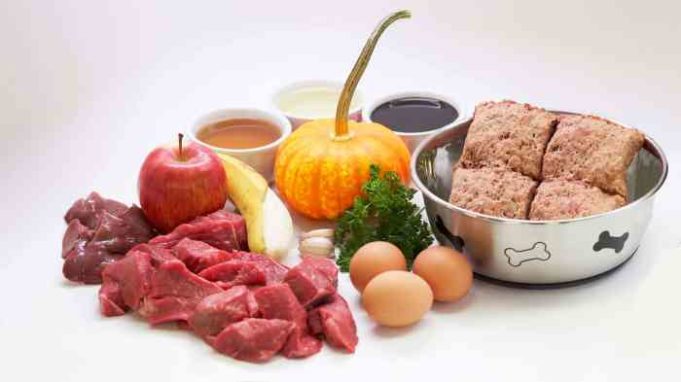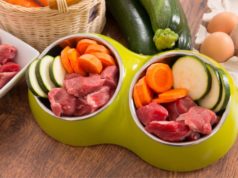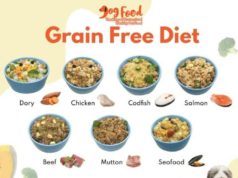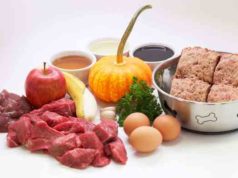Is raw diet good for dogs? This question sparks debate among pet owners, with some touting its benefits while others express concerns. A raw diet, often referred to as BARF (Biologically Appropriate Raw Food), involves feeding dogs unprocessed, raw animal-based ingredients like meat, bones, and organs. Proponents argue that this natural approach mirrors a dog’s ancestral diet, leading to improved digestion, a healthier coat, and even increased energy levels. However, potential risks, such as bacterial contamination and nutritional deficiencies, must be carefully considered.
This article delves into the world of raw diets for dogs, exploring both the potential advantages and disadvantages. We’ll examine the different types of raw diets, discuss the importance of proper food handling and storage, and provide guidance on transitioning your dog to a raw food regimen. By understanding the nuances of this dietary approach, you can make an informed decision about whether a raw diet is right for your furry friend.
What is a Raw Diet?
A raw diet for dogs is a feeding approach that involves providing them with uncooked, unprocessed animal-based foods, often supplemented with fruits, vegetables, and other nutrient-rich ingredients. This approach aims to mimic the natural diet of wolves, their ancestors, and often emphasizes whole, unadulterated ingredients.
Types of Raw Diets
There are various types of raw diets for dogs, each with its own specific composition and principles.
- BARF (Biologically Appropriate Raw Food): This popular raw diet philosophy emphasizes providing dogs with a balanced and nutritionally complete diet that mimics the natural prey of wild canids. It typically consists of a mix of raw meat, bones, organs, and sometimes fruits and vegetables. BARF proponents often advocate for homemade raw food preparation, allowing for customized diets based on individual dog needs.
- Prey-Model Raw: This approach focuses on replicating the natural prey diet of wolves and other wild canids. It involves feeding a whole prey animal, such as a rabbit or chicken, including the bones, organs, and muscle meat. This approach aims to provide a naturally balanced and complete diet.
- Commercial Raw Food: This option involves purchasing pre-made raw food products, often frozen or refrigerated, from pet food companies. These products can range from single-ingredient meat options to complete balanced meals that include meat, bones, organs, and sometimes fruits and vegetables. Commercial raw food offers convenience and can be a good option for pet owners who lack the time or resources for homemade preparation.
Ingredients in Raw Diets
Raw diets typically include a variety of ingredients, with a focus on animal-based sources.
- Meat: Raw meat is a crucial component of raw diets, providing protein, essential fatty acids, and other nutrients. Common meat sources include beef, chicken, turkey, lamb, and fish.
- Bones: Raw bones are often included in raw diets, serving as a natural source of calcium, phosphorus, and other minerals. They also provide chewing satisfaction and help to clean teeth.
- Organs: Raw organs, such as liver, heart, and kidneys, are rich in nutrients and provide essential vitamins, minerals, and enzymes. They can be a valuable addition to raw diets.
- Fruits and Vegetables: While not as prominent as animal-based sources, fruits and vegetables can be included in raw diets to provide fiber, vitamins, and antioxidants. Common options include carrots, apples, blueberries, and spinach.
Benefits of a Raw Diet for Dogs
A raw diet for dogs can offer a range of potential benefits compared to commercially prepared kibble. These benefits stem from the natural ingredients and the way these ingredients are processed, which can positively impact your dog’s overall health and well-being.
Improved Digestion
A raw diet can promote better digestion in dogs. Raw meat, bones, and organs are naturally easier for dogs to digest than highly processed kibble. The enzymes in raw food help break down nutrients, while the fiber in raw bones aids in digestion and regularity.
A study published in the Journal of Animal Science found that dogs fed a raw diet had significantly shorter intestinal transit times compared to those fed kibble. This suggests that raw food may be more easily digested and absorbed.
Healthier Coat and Skin
Raw diets are rich in essential fatty acids, like omega-3s and omega-6s, which are crucial for maintaining healthy skin and a shiny coat. These fatty acids help nourish the skin, reduce inflammation, and promote a healthy coat.
A study published in the Journal of Small Animal Practice found that dogs fed a raw diet had significantly improved skin and coat condition compared to those fed kibble. This improvement was attributed to the higher levels of essential fatty acids in the raw diet.
Increased Energy Levels
Raw food provides dogs with readily available energy from high-quality protein and healthy fats. This can lead to increased energy levels and improved athletic performance.
A study published in the Journal of Applied Animal Research found that dogs fed a raw diet had significantly higher levels of activity and endurance compared to those fed kibble. This was attributed to the higher energy density of the raw diet.
Reduced Allergies
Many dogs suffer from food allergies, and a raw diet can potentially reduce these allergies. Raw food often contains fewer ingredients and avoids common allergens like grains, soy, and dairy, which are frequently found in kibble.
A study published in the Journal of Veterinary Internal Medicine found that a significant number of dogs with food allergies experienced improvement in their symptoms when switched to a raw diet. This improvement was attributed to the elimination of common allergens from the diet.
Potential Risks and Concerns of a Raw Diet
While raw diets offer potential benefits for dogs, it’s crucial to acknowledge the potential risks and concerns associated with this feeding approach. These risks stem from factors like bacterial contamination, nutritional deficiencies, and choking hazards.
Bacterial Contamination
Raw meat and bones can harbor harmful bacteria such as Salmonella, E. coli, and Listeria. These bacteria can cause severe illness in both dogs and humans.
- Risk of Illness: Dogs consuming raw food are at risk of developing foodborne illnesses, potentially leading to vomiting, diarrhea, fever, and even death, especially in puppies, senior dogs, or those with compromised immune systems.
- Cross-Contamination: Handling raw meat and bones requires strict hygiene practices to prevent cross-contamination. Bacteria can easily spread to kitchen surfaces, utensils, and other food items, posing a risk to both pets and humans.
Nutritional Deficiencies
Formulating a complete and balanced raw diet can be challenging.
- Essential Nutrients: Ensuring adequate levels of essential nutrients like vitamins, minerals, and fatty acids is crucial for maintaining optimal health. A balanced raw diet should include a variety of meat, bones, organs, and supplements.
- Calcium-Phosphorus Ratio: Balancing the calcium-phosphorus ratio is essential for bone health. Feeding solely on meat can lead to calcium deficiency, while excessive bone consumption can cause an imbalance.
- Inadequate Vitamin and Mineral Supplements: Without careful planning and monitoring, it can be difficult to provide all the necessary vitamins and minerals through raw food alone, necessitating the use of supplements.
Choking Hazards
Raw bones, especially larger ones, pose a significant choking hazard.
- Potential for Aspiration: Dogs may choke on large bone fragments, potentially leading to aspiration (inhaling food or bone into the lungs), which can cause serious complications.
- Gastrointestinal Blockage: Bones can also become lodged in the digestive tract, leading to gastrointestinal blockage, requiring surgical intervention.
Food Handling and Storage
Proper food handling and storage are critical for minimizing the risks associated with raw diets.
- Thorough Washing: Always wash hands, surfaces, and utensils thoroughly with hot soapy water after handling raw meat and bones.
- Safe Storage: Store raw meat and bones separately from other food items in the refrigerator at a temperature below 40°F (4°C).
- Freezing: Freezing raw meat and bones can help kill some bacteria. However, it’s important to note that freezing may not eliminate all harmful bacteria.
Transitioning to a Raw Diet
Switching your dog to a raw diet should be done gradually to avoid digestive upset. A sudden change in diet can lead to diarrhea, vomiting, and other uncomfortable symptoms.
A Gradual Transition, Is raw diet good for dogs
It is essential to introduce raw food gradually, allowing your dog’s digestive system to adapt to the new diet. This process is called a “transition period” and involves slowly replacing your dog’s current food with raw food over several days or weeks.
- Start with a small amount of raw food. Begin by mixing a small amount of raw food with your dog’s current food. Start with a 25% ratio of raw food to kibble or canned food, and gradually increase the percentage of raw food over several days or weeks.
- Monitor your dog’s response. Observe your dog for any signs of digestive upset, such as diarrhea, vomiting, or gas. If your dog experiences any issues, slow down the transition process or reduce the amount of raw food.
- Increase the amount of raw food gradually. Once your dog tolerates the initial amount of raw food, you can slowly increase the amount. Continue monitoring your dog’s response and adjust the transition period based on their individual needs.
Monitoring Your Dog’s Response
Throughout the transition period, it’s crucial to pay close attention to your dog’s response. This includes:
- Observing their stool consistency. Look for normal, firm stools without any signs of diarrhea or loose stools. If you notice any changes, adjust the transition period accordingly.
- Monitoring for vomiting. Vomiting can be a sign of digestive upset or intolerance to the raw diet. If your dog vomits, reduce the amount of raw food or slow down the transition process.
- Checking for any changes in energy levels. A raw diet should provide your dog with the energy they need. If you notice a decrease in energy levels, it could be a sign that they’re not getting enough nutrients from the raw food. Consult with your veterinarian to adjust the diet if necessary.
Importance of Veterinary Consultation
Before transitioning your dog to a raw diet, it is essential to consult with your veterinarian. They can assess your dog’s individual needs and health conditions and provide guidance on appropriate raw food options, feeding amounts, and potential risks.
“It’s crucial to consult your veterinarian before making any significant dietary changes for your dog. They can help ensure the transition is safe and beneficial.”
Feeding a Raw Diet: Is Raw Diet Good For Dogs
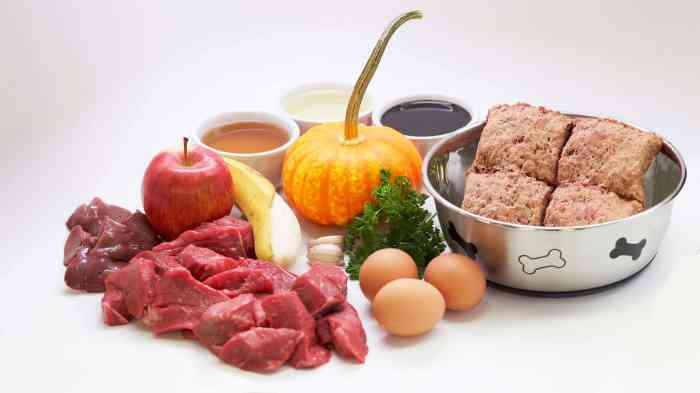
Feeding your dog a raw diet requires careful planning and preparation to ensure they receive the necessary nutrients and avoid potential health risks. This section will provide guidance on how to prepare and store raw food, determine appropriate portion sizes, and create a sample meal plan.
Preparing and Storing Raw Food
Preparing raw food for your dog involves sourcing high-quality ingredients and following proper handling and storage procedures. Here are some key considerations:
- Choose high-quality ingredients: Opt for meat, poultry, and fish that are human-grade and free from antibiotics and hormones.
- Properly handle and store raw food: Always wash your hands thoroughly after handling raw meat and store it separately from other foods. Refrigerate raw meat promptly and use it within a few days.
- Consider freezing: Freezing raw food in individual portions can extend its shelf life and make it easier to portion out meals.
- Use safe thawing techniques: Thaw frozen raw food in the refrigerator overnight, never at room temperature.
Determining Appropriate Portion Sizes
The amount of raw food your dog needs will vary based on their breed, age, activity level, and individual metabolism. It is essential to consult with your veterinarian to determine the appropriate daily calorie intake for your dog.
- General guidelines: As a starting point, adult dogs typically require 2-3% of their body weight in raw food per day.
- Puppies and senior dogs: Puppies require more calories per pound of body weight than adult dogs, while senior dogs often require less.
- Active dogs: Dogs that are very active, such as working dogs or athletes, may require more calories than less active dogs.
Sample Meal Plan
Here is a sample meal plan for a 50-pound adult dog on a raw diet, providing an estimated 1,500 calories per day.
Meal 1: 10 oz. ground beef, 5 oz. chicken breast, 1 cup bone broth, 1/2 cup chopped vegetables (carrots, broccoli, spinach)
Meal 2: 8 oz. salmon, 4 oz. lamb, 1 cup bone broth, 1/4 cup chopped fruits (apples, blueberries)
Meal 3: 6 oz. turkey, 3 oz. ground pork, 1 cup bone broth, 1/2 cup cooked rice
This is just a sample meal plan, and the specific ingredients and ratios may vary depending on your dog’s individual needs and preferences. It is crucial to consult with your veterinarian to create a customized meal plan for your dog.
Raw Diet for Specific Needs
A raw diet can be tailored to meet the specific needs of dogs with allergies, weight management concerns, or digestive issues. By carefully selecting ingredients and adjusting portion sizes, you can create a balanced and nutritious raw diet that addresses these challenges. However, it’s crucial to consult with your veterinarian to ensure the diet is appropriate for your dog’s individual needs.
Allergies
Raw diets can be beneficial for dogs with food allergies by eliminating common allergens like grains, dairy, and certain proteins.
- Ingredient Selection: Choose novel protein sources that your dog has not been exposed to before, such as rabbit, duck, or venison.
- Elimination Diet: Start with a single protein source and gradually introduce other ingredients, monitoring for any allergic reactions.
- Hydration: Ensure your dog is well-hydrated, as dehydration can exacerbate allergy symptoms.
Weight Management
Raw diets can help with weight management by providing a high-protein, low-carbohydrate option that promotes satiety and supports lean muscle mass.
- Portion Control: Carefully measure out the appropriate portion size based on your dog’s weight, activity level, and age.
- Fat Content: Choose leaner protein sources and avoid excessive fatty treats.
- High-Fiber Options: Include high-fiber ingredients like vegetables and fruits to promote fullness and aid digestion.
Digestive Issues
Raw diets can be easier to digest for dogs with sensitive stomachs or digestive issues, as they contain enzymes and probiotics that support gut health.
- Prebiotics and Probiotics: Incorporate prebiotic and probiotic-rich ingredients like bone broth, fermented vegetables, and yogurt.
- Gentle Protein Sources: Opt for easily digestible protein sources like chicken, turkey, or fish.
- Hydration: Ensure your dog has access to fresh water at all times to aid digestion and prevent dehydration.
Epilogue
While a raw diet can offer potential benefits for dogs, it’s crucial to weigh these advantages against the potential risks. Ultimately, the decision to feed a raw diet should be made in consultation with your veterinarian. They can assess your dog’s individual needs and help you determine the best dietary approach to ensure optimal health and well-being.
Questions and Answers
Can I feed my dog a raw diet without consulting a veterinarian?
It’s strongly recommended to consult with your veterinarian before making any significant dietary changes for your dog. They can assess your dog’s individual needs and help you create a safe and balanced diet.
What are some common signs of a nutritional deficiency in dogs?
Signs of nutritional deficiencies can include weight loss, dull coat, lethargy, and behavioral changes. If you notice any of these symptoms, it’s important to consult with your veterinarian.
How do I ensure my dog is getting all the necessary nutrients on a raw diet?
It’s essential to carefully balance the ingredients in a raw diet to ensure your dog receives all the necessary nutrients. Consult with your veterinarian or a certified animal nutritionist for guidance on creating a balanced meal plan.
Is a raw diet suitable for all dogs?
While a raw diet can be beneficial for some dogs, it may not be suitable for all. Certain breeds or dogs with specific health conditions may require a different dietary approach. Consult with your veterinarian to determine if a raw diet is appropriate for your dog.
Whether a raw diet is good for dogs is a question with no easy answer. It depends on the individual dog, their health, and the quality of the raw food. A good rule of thumb is to focus on a clean diet plan that provides all the necessary nutrients.
Ultimately, it’s best to consult with your veterinarian to determine the best diet for your furry friend.
Deciding if a raw diet is right for your dog involves weighing the potential benefits like increased energy and improved digestion against the risks like nutritional deficiencies and bacterial contamination. Similar to the question of whether can you drink diet soda on keto , it’s a matter of understanding the pros and cons.
Ultimately, the best diet for your dog is one that meets their individual needs and is tailored to their age, breed, and activity level.
A raw diet can be beneficial for dogs, offering a more natural way to meet their nutritional needs. However, ensuring proper balance is crucial, and a raw diet often lacks sufficient fiber. To address this, consider incorporating fiber-rich ingredients like fruits and vegetables, as well as looking into ways to how to get more fiber in your diet in general.
A well-rounded raw diet, with the right fiber content, can contribute to your dog’s overall health and well-being.















